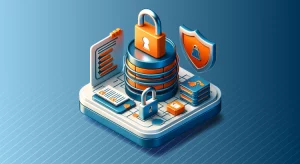
Data De-Identification

Data breaches can lead to financial losses, damage to reputation, and erosion of customer trust. To mitigate these risks, organizations must implement robust data security measures. One of the most effective methods is data de-identification, particularly the Safe Harbor method.
Definition of De-identification
Data de-identification is a process that involves removing or transforming personally identifiable information from a dataset.
By breaking the link between the data and the individual it belongs to, de-identification makes it possible to use and share data without compromising privacy.
This technique is especially relevant in industries that handle sensitive information, such as healthcare, finance, and government.
De-identification of data is not limited to a specific sector or regulation.
De-identification is important for organizations to comply with privacy standards like HIPAA, CCPA, CPRA, and GDPR.
The Safe Harbor Method of De-Identification
The Safe Harbor method is a specific approach to data de-identification outlined in the HIPAA Privacy Rule.
It involves removing 18 specific identifiers from protected health information (PHI) to create de-identified data.
These identifiers include names, dates, contact information, and unique identifying numbers or codes.
Organizations can use the Safe Harbor method to protect data from identifying specific individuals. This method ensures that even when combined with other information, the remaining data cannot be used to identify a specific individual.
After de-identifying the data using this method, it is no longer considered PHI. This means it does not have the same strict rules for how it can be used or shared.
The Safe Harbor method helps organizations follow HIPAA rules by giving them a clear way to de-identify data.
It ensures that the de-identified data is completely anonymous. One can use this data safely for research and sharing with third parties.
Benefits of De-Identification
Implementing data de-identification, particularly using the Safe Harbor method, offers several advantages to organizations.
First, it helps protect personal information by reducing the risk of it being leaked in case of a data breach. This means that people’s sensitive data is kept secure. It also ensures that confidential information remains private. Overall, it helps maintain the security of personal data.
De-identified data is less attractive to attackers and can limit the potential damage caused by a security incident.
De-identification also enables organizations to share data more freely with external parties, such as researchers, partners, and service providers.
Organizations can collaborate and gain insights from data without sharing personal information. This helps them avoid violating privacy regulations and maintain the trust of their customers. Sharing data without revealing personal information allows organizations to work together effectively. This way, they can benefit from each other’s data without compromising privacy.
In the healthcare industry, de-identified data has been instrumental in advancing medical research and improving patient care.
Scientists can study large groups of anonymous medical records. They can find trends and create new treatments. They can also use data to make decisions that improve public health.
De-identification allows for these advancements while protecting patient privacy.
Example:
A hospital wants to share patient data with a research institution to study the effectiveness of a new medication.
The hospital can de-identify patient records using the Safe Harbor method. This involves removing all 18 identifiers from the records. By doing this, it becomes impossible to trace the data back to specific individuals.
The research institution can then analyze the de-identified data to draw conclusions about the medication’s efficacy without compromising patient privacy.
Data De-Identification vs. Data Masking
Data de-identification and data masking are often used interchangeably, but there are some differences between the two concepts.
De-identification removes personal information, while data masking replaces sensitive data with realistic values.
Data masking techniques include scrambling, encryption, and substitution.
These methods keep important information safe while keeping the original data’s structure and format intact. This makes it usable for testing, development, and other non-production purposes.”
Data de-identification is when data is separated from individuals so it can’t be linked to a specific person. This process ensures that the information remains anonymous. It is important for protecting privacy and confidentiality.
De-identification is often used when data needs to be shared or analyzed for purposes other than internal use. This can include research or collaborating with external parties.
Example:
A financial institution wants to use customer data to train a new fraud detection algorithm.
The institution uses data masking to protect customer information. This involves replacing sensitive details such as names and account numbers with realistic fake values. This helps to keep the information safe from unauthorized access.
The masked data has the same structure and statistical properties as the original data. This allows the algorithm to learn from it without exposing real customer information.
Implementing Data De-Identification
While data de-identification may seem like a daunting task, it isn’t necessary to be complicated.
Organizations can start by identifying the data elements that need to be de-identified based on the applicable regulations and the purpose of the data.
After selecting a de-identification method, like the Safe Harbor method, be sure to apply it to all of your datasets.
To ensure the effectiveness of de-identification, organizations should regularly assess their data landscape and update their de-identification processes as needed.
They should also implement strong security measures to protect de-identified data from unauthorized access and misuse.
Example:
A marketing agency wants to analyze customer data from multiple clients to identify industry trends.
To comply with privacy regulations, the agency implements a de-identification process using the Safe Harbor method.
The company removes 18 pieces of information from customer data to create a secure dataset. One can then analyze and share this dataset with clients.
The agency also implements access controls and encryption to protect the de-identified data from unauthorized access.
Conclusion
In conclusion, data de-identification is a powerful tool for safeguarding sensitive information while enabling organizations to leverage their data assets.
The Safe Harbor method provides a clear and reliable approach to de-identifying data, particularly in the healthcare industry.
By removing specific identifiers, organizations can protect individual privacy, comply with regulations, and share data more freely for research and collaboration.
As data continues to play an increasingly critical role in today’s digital landscape, implementing effective data de-identification practices will become even more essential.
Companies that prioritize data security and privacy will decrease risks and build trust with customers and partners. This trust is essential for maintaining strong relationships and a positive reputation in the industry. By safeguarding sensitive information, companies can demonstrate their commitment to protecting the interests of those they work with. This approach benefits both the company and helps create a more secure and trustworthy business environment.
By embracing data de-identification, organizations can unlock the value of their data while ensuring the protection of individual privacy.
